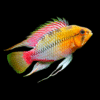To provide the best experiences, we use technologies like cookies to store and/or access device information. Consenting to these technologies will allow us to process data such as browsing behaviour or unique IDs on this site. Not consenting or withdrawing consent, may adversely affect certain features and functions.
The technical storage or access is strictly necessary for the legitimate purpose of enabling the use of a specific service explicitly requested by the subscriber or user, or for the sole purpose of carrying out the transmission of a communication over an electronic communications network.
The technical storage or access is necessary for the legitimate purpose of storing preferences that are not requested by the subscriber or user.
The technical storage or access that is used exclusively for statistical purposes.
The technical storage or access that is used exclusively for anonymous statistical purposes. Without a subpoena, voluntary compliance on the part of your Internet Service Provider, or additional records from a third party, information stored or retrieved for this purpose alone cannot usually be used to identify you.
The technical storage or access is required to create user profiles to send advertising, or to track the user on a website or across several websites for similar marketing purposes.
















Emily Carter (verified owner) –
I can’t rave enough about the stunning Mikrogeophagus Ramirezi «Balloon» Balloon Ram Dwarf Cichlids I recently added to my aquarium! After just two weeks of having them, I’ve already seen such an improvement in the overall ambiance of my tank. Their beautiful colors, like soft blues and vibrant oranges, create a perfect contrast against the lush greenery.
As a caring fish parent, I prioritize the health and happiness of my aquatic friends, and I can confidently say these little guys are thriving! They are peaceful and gentle, making them a fantastic addition to my community tank with guppies and tetras. Compared to other types of tropical fish I’ve kept, the Balloon Rams are quite interactive and curious, which adds so much character!
One minor concern is that they do prefer slightly softer water, so I recommend monitoring your water parameters closely. Overall, I wholeheartedly recommend these charming dwarf cichlids to anyone looking to enhance their freshwater aquarium. They’ve captivated my heart and I’m sure they’ll do the same for you!
Emily Rivers (verified owner) –
I recently added the Mikrogeophagus Ramirezi «Balloon» Balloon Ram Dwarf Cichlid to my community tank, and I couldn’t be happier! After about two months of monitoring, these little beauties have truly brightened up my aquarium with their vibrant colors and playful nature. They get along wonderfully with my other tropical fish, showcasing their peaceful demeanor. What’s more, they’re relatively easy to care for, making them perfect for both beginners and experienced aquarists alike.
One of my favorite features is their unique balloon shape, which not only adds a delightful visual element but also seems to contribute to their quirky personality. They love to explore the plants and occasionally show off their colors when they feel secure, which is a joy to watch.
The only minor concern I noticed was that they can be a bit shy initially, so providing plenty of hiding spots helped them acclimate faster. I would absolutely recommend these colorful fish to anyone looking to enhance their freshwater aquarium with lively, engaging pets. They’ve brought so much joy to my home, and I can’t wait to see how they continue to thrive!